

Ideas and Innovation - Year 2017 - Volume 32 -
How to avoid a retraction in the middle of the horizontal scar and minimize the risk of necrosis in the classic abdominoplasty
Como evitar uma retração no meio da cicatriz horizontal e minimizar o risco de necrose nas abdominoplastias clássicas
ABSTRACT
INTRODUCTION: In classic abdominoplasty, an undesirable result after abdominal flap traction is the occurrence of a suprapubic retraction in the middle of the horizontal scar when it coincides with the superior point of the old umbilical scar.
METHODS: Forty-five patients underwent abdominal dermolipectomy associated with liposuction of the entire abdomen and flanks, with decortication of the suprapubic area approximately 5 cm above the initial marking of the incision line, with posterior fixation at the lower border of the abdominal flap.
RESULTS: No depressions or necroses were observed in the suprapubic region.
CONCLUSION: We observed that the presence of a dermofat flap in the central portion of the suture line in the classic abdominoplasties associated with the complete reconstruction of the surgical planes and the fixation of this flap in the upper abdominal flap avoids the occurrence of depressions in this region, prevents occurrence of necrosis, and improves the quality of the scar by reducing the tensile stress on the tissues.
Keywords: Abdominoplasty; Necrosis; Cicatrix; Lipectomy; Tissue adherions.
RESUMO
INTRODUÇÃO: Nas abdominoplastias clássicas, um resultado indesejado após o tracionamento do retalho abdominal é a ocorrência de uma retração suprapúbica, no meio da cicatriz horizontal quando esta coincide com o ponto superior da antiga cicatriz umbilical.
MÉTODOS: Foram avaliadas 45 pacientes submetidas à dermolipectomia abdominal associada à lipoaspiração de todo o abdome e flancos, com decorticação de uma área suprapúbica cerca de 5 cm acima da marcação inicial da linha de incisão, com posterior fixação na borda inferior do retalho abdominal.
RESULTADOS: Não foram observadas depressões ou necroses na região suprapúbica.
CONCLUSÃO: Observamos, nos casos operados, que a presença de um coxim dermogorduroso na porção central da linha de sutura nas abdominoplastias clássicas, associada à reconstituição completa dos planos cirúrgicos e fixação deste coxim no retalho abdominal superior, evita a ocorrência de depressões nesta região, evita ocorrência de necroses e melhora a qualidade da cicatriz por redução da tensão de tração sobre os tecidos.
Palavras-chave: Abdominoplastia; Necrose; Cicatriz; Lipectomia; Aderências teciduais.
In abdominal dermolipectomies, removal of tissue excess with correction of sagging and remodeling of the abdominal wall, with a flat and uniform scar, without depressions or elevations throughout its length, is aimed at removing excess tissues1,2. The association of liposuction3-5 has contributed positively to obtaining a flat abdomen with recovery of its definition lines that interfere directly in the final result of the surgical procedure.
One of the undesirable results after repositioning of the abdominal flap is the occurrence of a suprapubic tissue retraction in the middle portion of the incision line (Figures 1A and 1B).
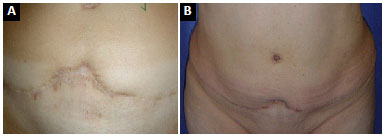
Figure 1A and 1B: Suprapubic scar retraction.
OBJECTIVE
To demonstrate that the presence of a dermofat pedicle in the central portion under the scar reduces the occurrence of retractions and necrosis in this area and promotes healing by providing aesthetically acceptable results.
METHODS
For a prospective study with follow-up of 6 months, we selected 45 female patients who submitted to abdominal dermolipectomy associated with liposuction of the entire abdomen and flanks. All the patients signed a free and informed consent form for preoperative documentation and authorization to use photographs.
After the marking of the incision line for abdominal dermolipectomy (Figure 2), a second incision line parallel to the first distal incision of approximately 5 cm (Figure 3) was demarcated, and the decortication of the area was promoted (Figure 4), leaving a pedicle (Figures 5A and 5B), which was later fixed to the lower border of the abdominal flap (Figures 6A and 6B), after resection of the tissue surplus.
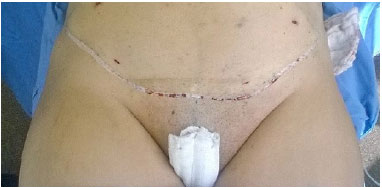
Figure 2. Marking of the lower incision line.
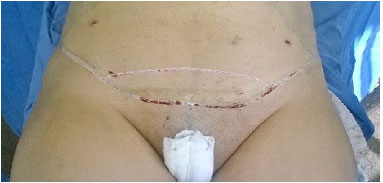
Figure 3. Marking of the second incision line.
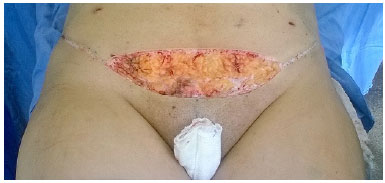
Figure 4. Decortication area.
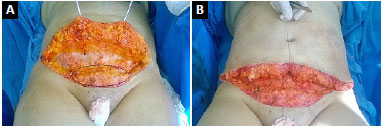
Figure 5. A: Dermofat flap; B: Upper abdominal and suprapubic dermofat flap.
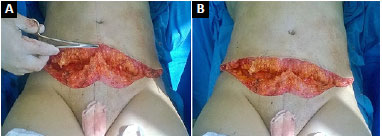
Figure 6. A: Initiation of tissue synthesis; B: Fixation of the upper abdominal flap to the decorticated area.
RESULTS
No retractions or necroses were observed in the suprapubic region. We observed a significant improvement in the quality of the scar, which was flat and uniform.
DISCUSSION AND CONCLUSION
We observed in the cases that we studied that the presence of a dermofat flap in the central portion of the suture line in abdominal dermolipectomies associated with complete reconstruction of the surgical planes and fixation of this flap in the upper abdominal flap (Figure 7) avoids the occurrence of cicatricial retractions in this region, minimizes the occurrence of necrosis, and improves the quality of the scar by reducing the tensile stress on the tissues (Figures 8A and 8B).
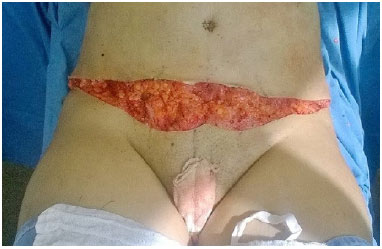
Figure 7. Reconstruction of anatomical planes.
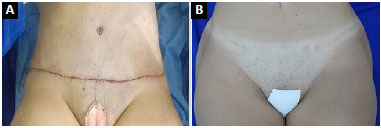
Figure 8. A. Immediate postoperative aspect; B: Postoperative aspect at 6 months.
COLLABORATIONS
RC Final approval of the manuscript; completion of surgeries and/or experiments.
BVBLC Final approval of the manuscript; completion of surgeries and/or experiments.
REFERENCES
1. Baroudi R, Ferreira CA. Contouring the hip and the abdomen. Clin Plast Surg. 1996;23(4):551-72.
2. Pitanguy I, Salgado F, Murakami R, Radwanski HN, Mauad Junior R. Abdominoplastia: classificação e técnicas cirúrgicas. Rev Bras Cir. 1995;85(1):23-44.
3. Hakme F. Technical details in the lipoaspiration associated with liposuction. Rev Bras Cir. 1985;75(5):331-7.
4. Saldanha OR, Federico R, Doi M. Lipoabdominoplasty: Saldanha's Technique In: Aston SJ, Walden J, Steinbrech DS, eds. Aesthetic Plastic Surgery. 1st ed. New York: Elsevier Health Sciences; 2009. p. 757-64.
5. Franco FF, Basso RCF, Tincani AJ, Kharmandayan P. Complicações em lipoaspiração clássica para fins estéticos. Rev Bras Cir Plást. 2012;27(1):135-40. DOI: http://dx.doi.org/10.1590/S1983-51752012000100023
1. Sociedade Brasileira de Cirurgia Plástica, Contagem, MG, Brazil
2. Faculdade de Medicina de Petrópolis, Petrópolis, RJ, Brazil
Institution: STK - Núcleo de Cirurgia Plástica, Belo Horizonte, MG, Brazil.
Corresponding author:
Roney Campos
Av. João Cesar de Oliveira, 1298, sala 605 - Eldorado
Contagem, MG, Brazil - Zip Code 32310-000
E-mail: roneycampos66@hotmail.com
Article received: December 16, 2015.
Article accepted: September 23, 2017.
Conflicts of interest: none.


 Read in Portuguese
Read in Portuguese
 Read in English
Read in English
 PDF PT
PDF PT
 Print
Print
 Send this article by email
Send this article by email
 How to Cite
How to Cite
 Mendeley
Mendeley
 Pocket
Pocket
 Twitter
Twitter